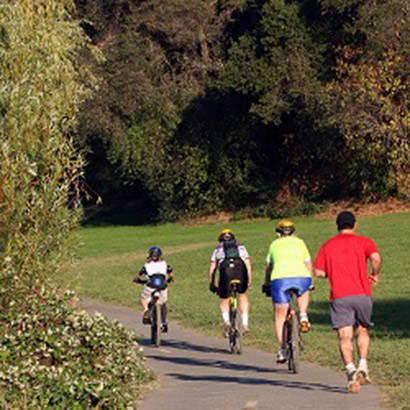
When a group of civic leaders in the City of Hastings, Nebraska, decided to develop an infrastructure of sidewalks and trails to encourage walking and biking, they ended up with an education in planning, zoning, and engineering. This group included city council members, the mayor, public employees, local businesses representatives and leadership from local non-profit organizations. They liked the idea of “Complete Streets” – making streets accessible to walkers, bikers and public transportation users as well as cars. Hastings’ new “Complete Streets” plan calls for extending the current 5.2-mile hike and bike trail another 2.8 miles. Decrepit sidewalks have been targeted for repaving, and every street addition and improvement is accompanied by the installation of ADA-compliant ramps and cut-outs. The plan is being brought to the City Council and should be adopted by Fall 2012. Backers of the plan are making efforts to be more visible in the community in order to garner additional support.
The big challenge has been to change the decision-making process for roads projects. In the past, the engineering department made decisions and presented them to the City Council for a “rubber-stamp” approval after bids are received. There was no real opportunity for input. Taking a new approach, the group is working with the necessary agencies to create a Complete Streets committee, which will include one member each from the City Council, the utilities board, and the planning and zoning commission. The committee will work directly with the street department to make sure non-motorized transportation is considered in all future projects. The group will be involved early in the process so hike and bike connections can be considered as projects are being prioritized.
Thanks to these efforts, the thought process on such projects has changed: Now, when a project is proposed, the City Council discusses “Complete Streets” before it moves forward. In addition to a change in process, the city has approved construction of more than 10 miles of bike/walking trails, and the local college is closing a large through-street to encourage walking and biking on campus.
One of the important components of the success in Hastings is the involvement and commitment of local leaders. The collaborative that proposed the Complete Streets plan includes two City Council members and the mayor. There is little opposition at high levels of local government. Because the City Council is making it a priority, city administrators and engineers are showing less resistance to the plan overall. Change has been slower at the utilities commission, but there have been signs of reception to the new plan there as well.
Looking at construction and infill projects through the lens of walkability and bike-ability is a culture change for Hastings. But, for the most part new trail infrastructure was only necessary for connections between existing partial trails. The local planning group, with leadership from the City Council, is now able to think strategically about the best use of public funds for completing streets locally.
